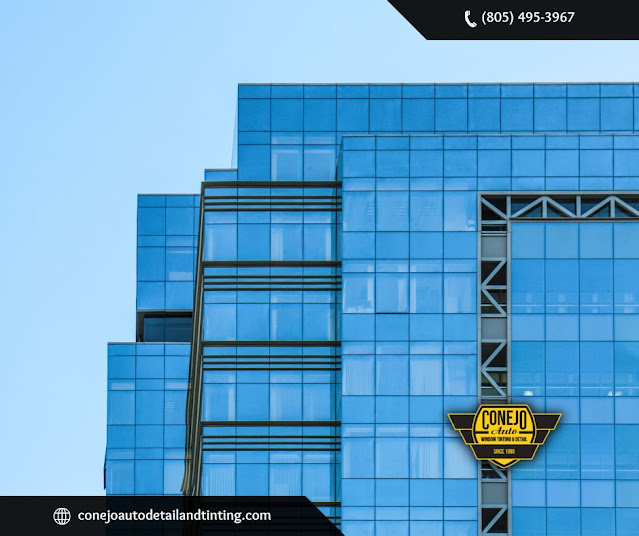The Comprehensive Guide to Car Tinting: Key Features That Make a Difference
When evaluating the key characteristics that define superior car tinting, several important technical factors come into play. Modern tints, particularly those utilizing nano-ceramic technology, excel in blocking harmful UV rays by embedding microscopic ceramic particles within the film. This allows the tint to reject up to 99% of ultraviolet radiation without compromising visibility. In addition to UV protection, tints made from spectrally selective materials enhance thermal insulation by filtering infrared radiation, which helps regulate cabin temperature and reduces the need for air conditioning.
Car tinting also benefits from multilayer optical film (MOF) technology, which significantly minimizes glare from direct sunlight and oncoming headlights, providing a safer driving experience. Additionally, many advanced tints are constructed with shatter-resistant layers that reinforce the strength of the glass, enhancing vehicle security and reducing the risk of injury in the event of an accident. For those seeking privacy and a sleek aesthetic, dyed and metallized films offer varying levels of opacity while also adding a polished look to the vehicle’s exterior. To make an informed choice, understanding these materials, relevant legal regulations, and warranty specifics is essential.
Key Benefits of Car Tints
Car tinting offers an array of significant benefits that go far beyond mere aesthetics. One of the primary advantages of car tinting is its ability to block UV radiation. High-quality tints, such as those made from nano-ceramic materials, can block up to 99% of ultraviolet rays, protecting both passengers and the interior of the car. This UV protection helps prevent skin damage and also protects the vehicle’s interior materials, such as upholstery and dashboard, from fading and deterioration over time.
Another major advantage of car tinting is its thermal insulation properties. Tints using spectrally selective materials excel at rejecting infrared radiation, which drastically reduces the heat inside the vehicle. As a result, drivers and passengers enjoy a cooler cabin, which decreases the need for air conditioning and can lead to improved fuel efficiency.
Car tinting also plays a significant role in reducing glare, thanks to advanced multilayer optical film technology. By cutting down on both direct sunlight and the glare from oncoming headlights, tints improve visibility and enhance comfort for drivers, making it easier to see during bright or low-light conditions.
In terms of safety and security, window tints offer an added layer of protection. Tints made from thicker polyester materials reinforce the glass, making it more resistant to shattering upon impact. This helps reduce the risk of injury from glass shards in the event of an accident and also deters break-ins, as the reinforced glass is harder for thieves to break.
Lastly, car tints enhance privacy, with dyed and metallized films providing various levels of opacity to ensure that the activities inside the car remain concealed. Whether you’re driving through the city or parking in a busy area, tinted windows can keep prying eyes from peering into your vehicle. Collectively, these benefits highlight the indispensable role of car tinting in improving both the functionality of your vehicle and the well-being of its occupants.
Choosing the Right Tint
Selecting the ideal tint for your vehicle involves a careful evaluation of several factors, including material composition, legal requirements, and your primary needs. Taking a methodical approach ensures that you make a well-informed decision that meets both your aesthetic preferences and functional requirements.
Material Composition: Car tints come in a variety of materials, including dyed, metalized, carbon, and ceramic options. Dyed films are cost-effective but may fade over time. Metalized tints offer durability and UV protection but can interfere with electronic signals. Carbon tints provide a sleek, modern appearance without signal disruption, while ceramic tints—the premium option—offer superior heat rejection, UV protection, and clarity without compromising performance.
Legal Regulations: Each state or country has specific laws governing the Visible Light Transmission (VLT) percentage allowed for car windows. It’s important to research your local regulations to ensure that the tint you choose complies with the law and avoids potential legal issues.
Intended Functionality: Identifying your primary needs will help guide your choice of tint. Whether your focus is on UV protection, glare reduction, or privacy, different tints excel in different areas. For instance, ceramic tints are excellent for heat rejection, while dyed films are ideal for enhancing privacy.
Warranty and Longevity: Consider the warranty offered by the manufacturer and the expected lifespan of the tint. High-quality tints typically come with extended warranties that cover issues like fading, peeling, and bubbling, ensuring long-term satisfaction and value.
In conclusion, for vehicle owners seeking the best in car tinting, the decision is not just about appearance. It requires a thorough understanding of UV protection, thermal insulation, glare reduction, security, and privacy features. While it may be tempting to opt for cheaper alternatives, the integration of cutting-edge materials and technologies in high-quality tints ensures superior performance, compliance with legal standards, and long-lasting benefits. Investing in premium car tinting enhances both the comfort and safety of your vehicle, making it a smart choice for any discerning driver.




Comentarios
Publicar un comentario